That's A Good Nature Living Idea ; Green Idea😇
That's a good nature living idea ; green idea😇

An Indian company created shopping bags that are 100% natural, biodegradable, and edible. It took 4 years to develop the bags, which are made of potato, tapioca, corn, starches, and vegetable oils. Though slightly more expensive than plastic, the bags break down quickly, dissolve completely, and become a safe food source for animals rather than a choking hazard. Source
More Posts from F-taser-blog and Others
6 Tiny Satellites That Are Changing How We See Earth

HARP: Hyper-Angular Rainbow Polarimeter
What’s better than taking a picture of a cloud to figure out its size and shape? Taking a bunch of pictures all around it. That way you get a three-dimensional view without having to worry about missing something. The HARP CubeSat is going to do just that: make observations of cloud droplets and tiny airborne particles like soot and dust with a modified camera lens from multiple angles. This will give us a full rendering of what’s going on inside the clouds, specifically, how those airborne particles act as “seeds” for water vapor to condense on and form cloud droplets. Since so many of those particles are in the air as a result of man-made pollution, we want to understand how they may be affecting clouds, weather and climate.

RAVAN: Radiometer Assessment using Vertically Aligned Nanotubes
Anyone who’s worn a black shirt on a summer day knows how much sunlight and heat it absorbs. The RAVAN 3-unit CubeSat, however, carries “blacker than black” technology – carbon nanotubes set up like a bundle of drinking straws that suck up nearly all the sunlight and energy that reach them to the point that your black shirt seems merely dark grey in comparison. Flying in low Earth orbit, RAVAN’s super sensitive instrument will detect tiny changes in the amount of sunlight and energy passing into and out of the top of the atmosphere. The amount of energy passing through the top of the atmosphere is where the net accounting of Earth’s energy budget happens – one of the major measurements we need in order to understand the effects of greenhouse gases on global warming and climate change.

MiRaTA: Microwave Radiometer Technology Acceleration
That long skinny piece coming out of the bottom right side under the solar panel? That’s a measuring tape. It’s doubling as a communications antenna on the MiRaTA CubeSat that will be a mini-weather station in space. This 3-unit, shoe box-sized satellite is testing out new, miniaturized technology to measure temperature, water vapor, and cloud ice in the atmosphere. They’ll be tracking major storms, including hurricanes, as well as everyday weather. If this test flight is successful, the new, smaller technology will likely be incorporated into major – large – weather satellite missions in the future that are part of our national infrastructure.

IceCube
The aptly named IceCube will measure – you guessed it – ice in our atmosphere. Unlike the droplets that make up rain, ice is one of the harder things to measure from space. IceCube is a 3-unit CubeSat about the size of a loaf of bread outfitted with a new high-frequency microwave radiometer, an instrument that measures naturally occurring radiation emitted by stuff in the atmosphere – cloud droplets, rain, and the ice particles at the tops of clouds. This will be the first space test of the new microwave radiometer that has to balance its tiny size and low power with being sensitive enough to detect cloud ice.

CYGNSS: Cyclone, Global Navigation Satellite System
What do GPS signals do when they’re not talking to your phone? A lot of them are just bouncing harmlessly off the planet’s surface – a fact that the CYGNSS mission is taking advantage of to measure wind speed over the ocean. Eight identical small satellites, each about the size of a microwave oven, flying in formation carry custom modified GPS receivers pointed at the oceans. When the water is smooth – not windy – the GPS signals reflect back uniformly, like the moon on a pond reflected as if in a mirror. When the water is choppy – windy – the signals reflect back in in the same direction but distorted, like the moon reflection on a choppy pond being distorted by ripples. Flying eight satellites in formation means the CYGNSS mission can measure wind speed across more of the ocean at once, which will help with understanding tropical storms and hurricanes.

TROPICS: Time-Resolved Observations of Precipitation structure and storm Intensity with a Constellation of Smallsats
An important way to improve forecasts of hurricane and tropical cyclone intensity is to see what’s going on inside and around them while they’re happening. That’s the goal of the TROPICS mission, 12 CubeSats that will fly in formation to track the temperature and humidity of storm environments. The TROPICS CubeSats will get very frequent measurements, similar to X-rays, that cut through the overall cloud-cover so we can see the storm’s underlying structure. The storm structures known as the eyewall – tall clouds, wind and rain around the eye – and rainbands – the rainy parts of the spiral arms – give us clues about whether a storm is primed to intensify into a category 4 or 5 storm, something everyone in their path needs to know.
Learn more the world of small satellites at: https://www.nasa.gov/mission_pages/smallsats
Make sure to follow us on Tumblr for your regular dose of space: http://nasa.tumblr.com
"We shall never know all the good that a simple SMILE can do"
St.Mother Teresa
beautiful canda

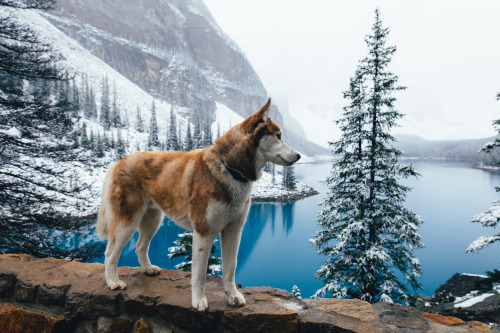
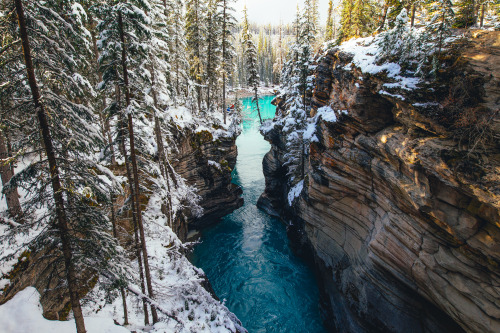
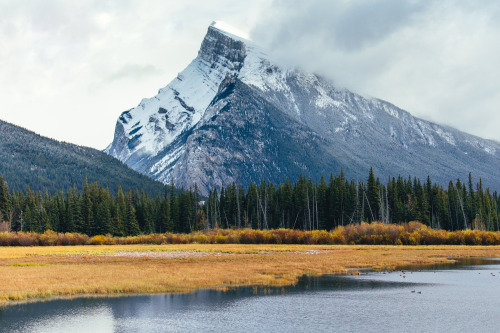
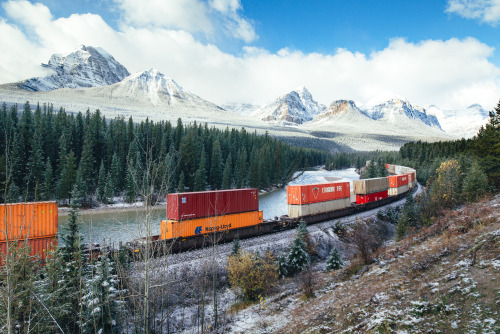
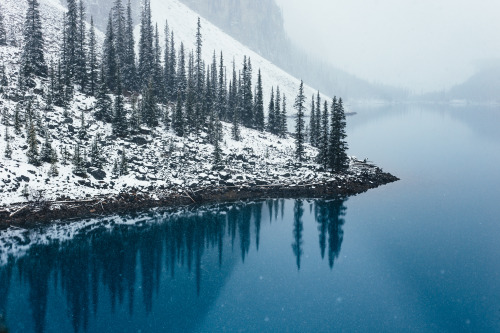

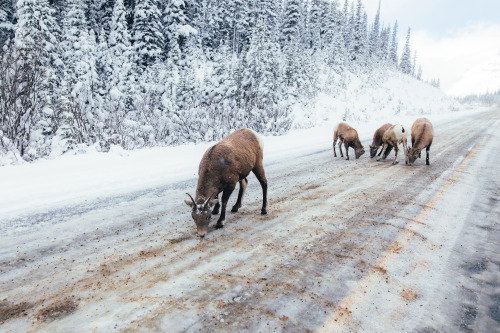
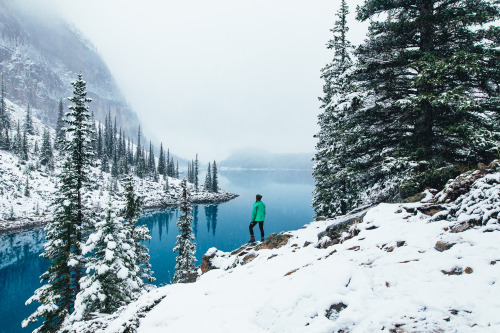
First snow in the Canadian Rockies.
Banff and Jasper National Parks, Alberta, Canada. October 2016.
Why Do We Study Ice?
Discover why we study ice and how this research benefits Earth.

We fly our DC-8 aircraft very low over Antarctica as part of Operation IceBridge – a mission that’s conducting the largest-ever airborne survey of Earth’s polar ice.

Records show that 2015 was the warmest year on record, and this heat affects the Arctic and Antarctica – areas that serve as a kind of air conditioner for Earth and hold an enormous of water.

IceBridge flies over both Greenland and Antarctica to measure how the ice in these areas is changing, in part because of rising average global temperatures.
IceBridge’s data has shown that most of Antarctica’s ice loss is occurring in the western region. All that melting ice flows into the ocean, contributing to sea level rise.

IceBridge has been flying the same routes since the mission began in 2009. Data from the flights help scientists better measure year-to-year changes.

IceBridge carries the most sophisticated snow and ice instruments ever flown. Its main instrument is called the Airborne Topographic Mapper, or ATM.The ATM laser measure changes in the height of the ice surface by measuring the time it takes for laser light to bounce off the ice and return to the plane – ultimately mapping ice in great detail, like in this image of Antarctica’s Crane Glacier.

For the sake of the laser, IceBridge planes have to fly very low over the surface of snow and ice, sometimes as low as 1,000 feet above the ground. For comparison, commercial flights usually stay around 30,000 feet! Two pilots and a flight enginner manage the many details involved in each 10- to 12-hour flight.

One of the scientific radars that fly aboard IceBridge helped the British Antarctic Survey create this view of what Antarctica would look like without any ice.

IceBridge also studies gravity using a very sensitive instrument that can measure minuscule gravitational changes, allowing scientists to map the ocean cavities underneath the ice edges of Antarctica. This data is essential for understanding how the ice and the ocean interact. The instrument’s detectors are very sensitive to cold, so we bundle it up to keep it warm!

Though the ice sheet of Antarctica is two miles thick in places, the ice still “flows” – faster in some places and slower in others. IceBridge data helps us track how much glaciers change from year-to-year.

Why do we call this mission IceBridge? It is bridging the gap between our Ice, Cloud and Land Elevation Satellite, or ICESat – which gathered data from 2003 to 2009 – and ICESat-2, which will launch in 2018.

Learn more about our IceBridge mission here: www.nasa.gov/icebridge and about all of our ice missions on Twitter at @NASA_Ice.
Make sure to follow us on Tumblr for your regular dose of space: http://nasa.tumblr.com
Oh I want something just like this....
![Milky Way Over Vegas From Valley Of Fire [OC] [1365x2048] Visit Http://spaceviewsandbeyond.blogspot.com/2017/06/milky-way-over-vegas-from-valley-of.html](https://64.media.tumblr.com/d1a87c71a5da4dc09a6241218748082a/tumblr_or2e6mbQMM1w094hwo1_500.jpg)
Milky Way Over Vegas from Valley of Fire [OC] [1365x2048] Visit http://spaceviewsandbeyond.blogspot.com/2017/06/milky-way-over-vegas-from-valley-of.html for more space pics
"We ourselves feels that we are doing is just a drop in the ocean, but the ocean would be less because of that missing drop"
Saint Mother Teresa
Biotronium series post-2
The weather suddenly changes.. 'Oh what the Heck, as usual the weather changes suddenly' That's what we say now.But a decade back when weather suddenly changes people say 'some thing is wrong' ..Now what's exactly happening ?.Scientist and theorists say its really something wrong...really wrong - Like a global wipe out ?!.
Cosmicportal said "True love is not blind" yeah, he is absolutely right, but we could also add something to it so i think its better to say "True love is not blind enough to ignore feelings"...this could make that evenmore beautiful.
Life isn't about finding yourself. Life is about creating yourself
brainyqoutes { George Bernad Shaw
Well,well NASA just go and find some alien friends....(post by sci universe)

Well this is a bummer, but a good call considering how media is like 😄 NASA will host a teleconference at 2 p.m. EDT Monday, Sept. 26, to present new “surprising evidence” of activity from images captured by the Hubble Space Telescope.
Europa is thought to host an ocean of liquid water beneath its icy surface, and is thus considered to be one of the best places to search for alien life elsewhere in the Solar System.
If you want to know more about Europa, I recommend this infographic by space.com.
-
 wolfsrahne28 liked this · 1 year ago
wolfsrahne28 liked this · 1 year ago -
 thethoughtsandwich reblogged this · 4 years ago
thethoughtsandwich reblogged this · 4 years ago -
 reaperrayven liked this · 4 years ago
reaperrayven liked this · 4 years ago -
 atlaskat liked this · 4 years ago
atlaskat liked this · 4 years ago -
 lentpassionmoondevotee liked this · 5 years ago
lentpassionmoondevotee liked this · 5 years ago -
 mattenoire liked this · 5 years ago
mattenoire liked this · 5 years ago -
 trenchcoatedwhiskers liked this · 5 years ago
trenchcoatedwhiskers liked this · 5 years ago -
 waywardangeldeancookie-blog liked this · 5 years ago
waywardangeldeancookie-blog liked this · 5 years ago -
 sammybee121 liked this · 5 years ago
sammybee121 liked this · 5 years ago -
 pepefernandez liked this · 5 years ago
pepefernandez liked this · 5 years ago -
 koinoyokan1982 liked this · 5 years ago
koinoyokan1982 liked this · 5 years ago -
 unnecessarilyliteral liked this · 5 years ago
unnecessarilyliteral liked this · 5 years ago -
 voidbandit5 reblogged this · 5 years ago
voidbandit5 reblogged this · 5 years ago -
 voidbandit5 liked this · 5 years ago
voidbandit5 liked this · 5 years ago -
 sun-bae-by liked this · 5 years ago
sun-bae-by liked this · 5 years ago -
 oxymitch-archive liked this · 5 years ago
oxymitch-archive liked this · 5 years ago -
 pretty-generic reblogged this · 5 years ago
pretty-generic reblogged this · 5 years ago -
 pretty-generic liked this · 5 years ago
pretty-generic liked this · 5 years ago -
 chilltifi reblogged this · 5 years ago
chilltifi reblogged this · 5 years ago -
 lost-octopie reblogged this · 5 years ago
lost-octopie reblogged this · 5 years ago -
 mairemisfit reblogged this · 5 years ago
mairemisfit reblogged this · 5 years ago -
 rawringthroughthetwenties reblogged this · 5 years ago
rawringthroughthetwenties reblogged this · 5 years ago -
 rawringthroughthetwenties liked this · 5 years ago
rawringthroughthetwenties liked this · 5 years ago -
 wunkosaurus93 reblogged this · 5 years ago
wunkosaurus93 reblogged this · 5 years ago -
 fluffchemy liked this · 5 years ago
fluffchemy liked this · 5 years ago -
 atroubadour55-blog liked this · 5 years ago
atroubadour55-blog liked this · 5 years ago -
 help-a-bitch reblogged this · 5 years ago
help-a-bitch reblogged this · 5 years ago -
 willow-stay-rollin liked this · 5 years ago
willow-stay-rollin liked this · 5 years ago -
 liaqus liked this · 5 years ago
liaqus liked this · 5 years ago -
 2000spaniard liked this · 5 years ago
2000spaniard liked this · 5 years ago -
 mtf-tfem reblogged this · 5 years ago
mtf-tfem reblogged this · 5 years ago -
 goshdarniittt liked this · 5 years ago
goshdarniittt liked this · 5 years ago -
 captainskkyuniverse liked this · 5 years ago
captainskkyuniverse liked this · 5 years ago -
 nintendogamefreak97 liked this · 5 years ago
nintendogamefreak97 liked this · 5 years ago -
 aaayyygender reblogged this · 5 years ago
aaayyygender reblogged this · 5 years ago -
 aaayyygender liked this · 5 years ago
aaayyygender liked this · 5 years ago -
 vroomkat liked this · 5 years ago
vroomkat liked this · 5 years ago -
 365donothingclub liked this · 5 years ago
365donothingclub liked this · 5 years ago -
 l0n3lyb0yclub-blog liked this · 5 years ago
l0n3lyb0yclub-blog liked this · 5 years ago